18 Concept Mapping – Seven Steps
Creating a concept map is a way of organizing your brainstorming around key concepts. Mapping was introduced in Chapter 8 – Note-taking Skills.
This video from the University of Guelph offers a brief and helpful overview of concept mapping:[1]
Let’s use our example where an instructor has given us the assignment: Write a 1000 word persuasive essay that responds to the question: “Are transit services effective for Kwantlen University students?” Include your own perspective in your analysis and draw on two primary and two academic sources.
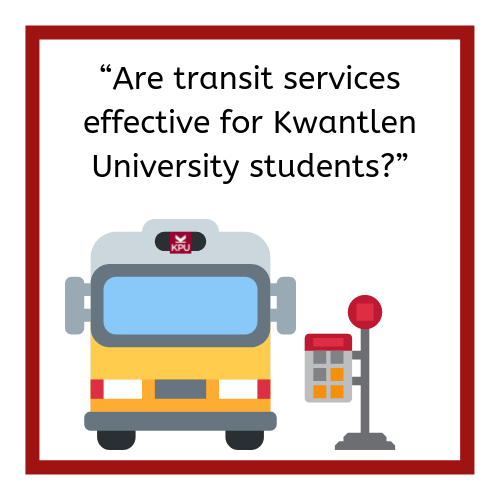
We’ll follow the seven steps of concept mapping outlined in the video below and I’ll include some examples.
If you have your own assignment that you are currently working on, use the steps below to make your own concept map for your assignment.
Step One
- Identify the main topic
- Brainstorm everything you know about the topic
- Use relevant content from course, lectures, textbooks, and course material
Sticky notes can be a great way of jotting down ideas – you can move the notes around as you begin to identify similarities and differences. You can also ask questions and include reminders of work that you need to do. See the example below of some sticky notes I might use to start my assignment:
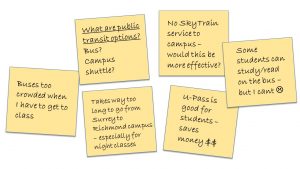
I’ll add more sticky notes with key questions that relate back to the assignment – I’ll need to find primary and academic sources. I can use these questions as I begin my research process and identify the primary and academic sources I need to support the argument that I will make:
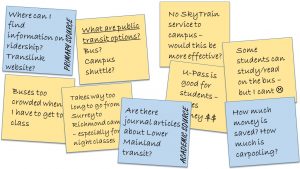
Step Two
- Organize information into main points
After noting down what I know about my topic and identifying key questions that I’ll need to research, I can focus on a few things that will be important to describe and analyze in my essay. I’ve made a list of some I can use:
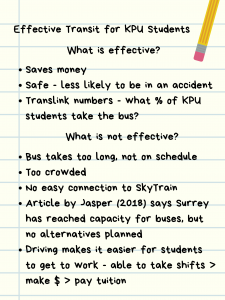
Based on what I’ve done so far, I’m setting up a descriptive comparison of transit options for KPU students, though I will emphasize that current transit options are not effective. I want to look for further connections between ideas and see how I can shape my argument.
Step Three
- Start creating map
- Begin with main points
- Branch out to supporting details

Give it a try! Based on your experience of public transport and the ideas that I’ve outlined so far, how might you start to create a concept map? You can use a piece of paper, or concept mapping software, to make notes of ideas and start to connect them.
Step Four
- Review map and look for more connections
- Use arrows, symbols, and colours, to show relationships between ideas
I start to build layers of connections and relationships in my map:
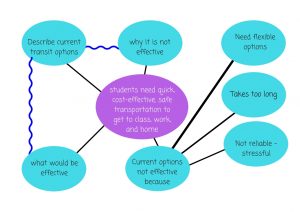
Step Five
- Include details
This is where I can provide more information about each point – below, I’ve taken one of the points and added to it:
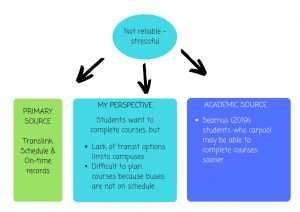
Step Six
- Analyze and improve map by asking questions
- How do ideas fit together?
- Have all necessary connections been made?
This is where I can step back and review my map and keep the purpose of my assignment in mind. This is also a good time to follow up on questions that I might have. I can talk through my ideas with a classmate or visit my instructor as I continue to develop and refine my ideas.
Step Seven
- Update concept map as you learn more
- Ask key questions about connections between ideas
I’ll keep my map with me as I meet with my instructor to discuss my ideas and when I visit the library to locate any academic resources that I might need; this way, I can keep everything together.
- “How to Create a Concept Map” by University of Guelph Library CC BY-NC-SA 4.0↵
first; original
A primary source is one that is unmediated such as a first-hand account of events.
researched, reliable, written by academics and published by reputable publishers; often, but not always peer reviewed

